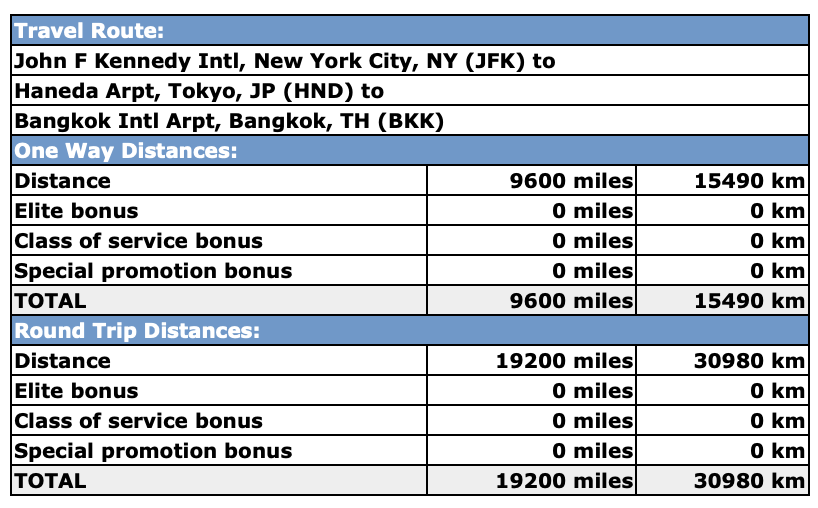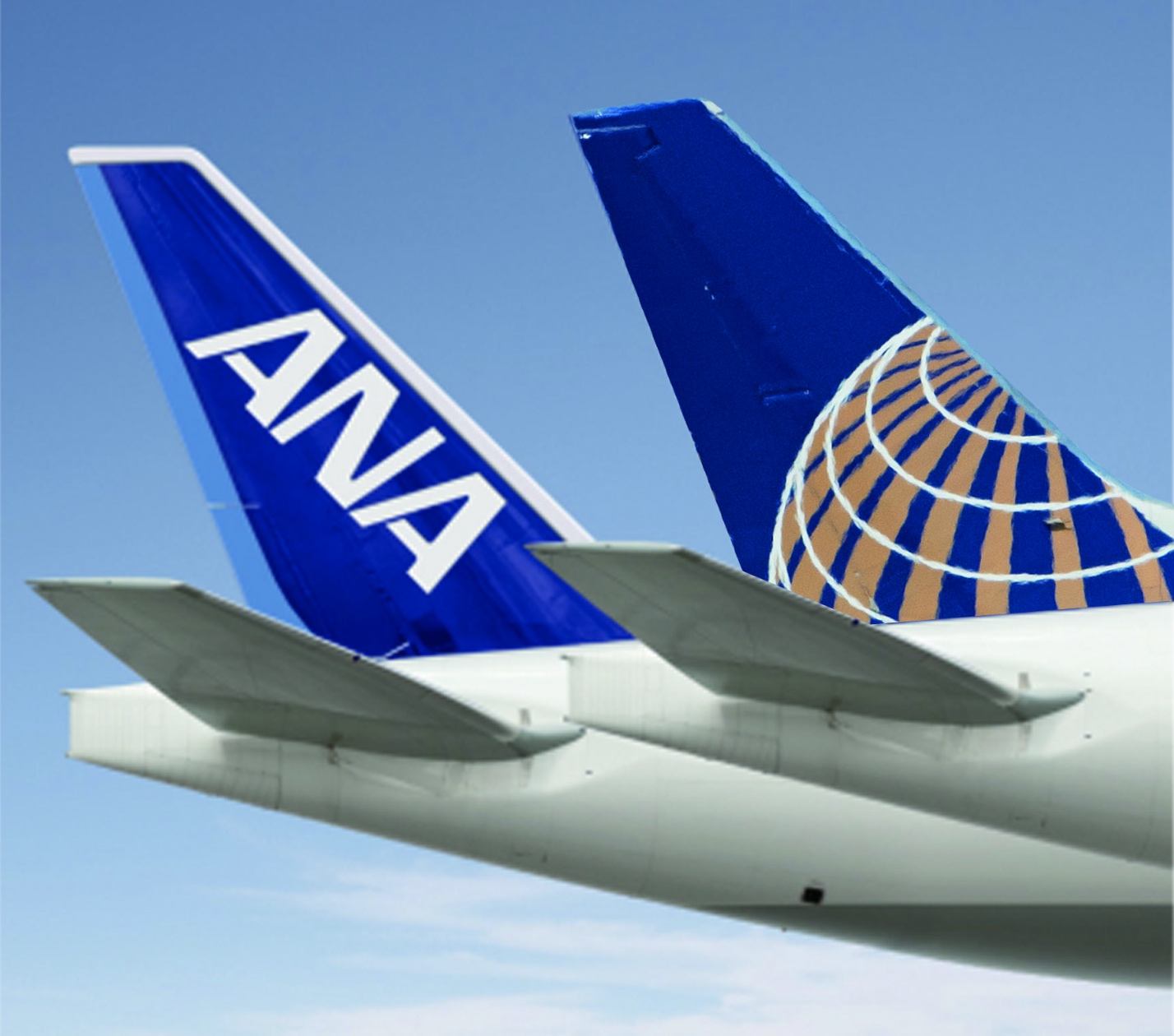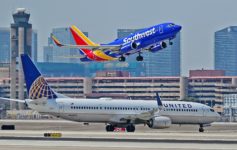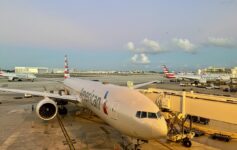A fare deal came out this week that clearly demonstrates the benefits of the new United Mileage Plus program, one that should encourage those who might struggle to achieve $18,000 in spending annually.
If you are considering booking travel or signing up for a new credit card please click here. Both support LiveAndLetsFly.com.
If you haven’t followed us on Facebook or Instagram, add us today.
New Mileage Plus Program Requirements
I previously outlined the new requirements to United Airlines’ Mileage Plus elite status. The biggest headline were two things. The first was an increase in the amount of spending required, at the top end especially ($18,000 annually up from $12,o00 two years ago.) The second was a move toward segment qualification at a lower level (54 segments annually down from 120) and the elimination of distance flown as a qualifier.
With these announcements, they also extended earning of PQPs (one Premier Qualifying Point is accrued per dollar spent on airfare excluding taxes and fees) to their partners based on a percentage of distance flown (either 20% or 16% depending on the carrier.) ANA is one of their preferred partners earning 20% of the distance based on earning in the Mileage Plus program in the form of PQPs.
A Great Deal
Another Boarding Area blog this week announced a deal to Bangkok from the US on ANA in Premium Economy for just over $1000 roundtrip.
- Distance = 19,200 miles
- ANA earns 100%, 125% or 150% for Premium Economy on ANA
- PQPs earned = 3840, 4800, or 5760


Why It’s So Valuable to Travelers Like Me
At a minimum, flyers who struggled to achieve 1K status at $15,000 could find themselves back “on the island” with just two of these trips. They punch above their weight, by a lot.
Additionally, these fares are upgradable to ANA business class with Plus Points which are now more flexible than before and for less than the value of a full GPU would have been.
This helps travelers like me that are mostly domestic with a few international trips every year to requalify for their status level. It also puts the carrier on par with peers like American and Delta that have had something similar in place for year, but with more partners than both of them, options are endless. Lastly, I don’t want to fly for 22 hours in standard coach if I can avoid it, ANA’s Premium Economy product is one of the better options available and cheap options for upgrades help elevate even that experience.

Conclusion
I haven’t booked this fare, but if the timing aligned with my availability, I likely will later in the year. The value is too high, the risk of riding in “deep coach” isn’t there, and the upsides are too great to pass up. While some don’t have the time or flexibility to take advantages of opportunities like this one, others will and I believe they will enjoy United Mileage Plus more than they did last year.
What do you think? Will you take advantage of a deal like this?




Part of the trip is on R fare class for which you get no miles.
Please double check and update
You’d think checking an actual source (rather than… memory?) would be warranted before booking a $1k ticket solely for the earnings.
Only took a couple clicks to get from Google Flights to the booking page on United, where I see 715+725 award miles, 483+483 PQP. Ouch.
Do not book through United, you no longer earn as a partner which delivers far more in this instance. Even if it’s $200 more to book on ANA ticket stock, it’s worth it over those points and miles.
So what you’re saying is, if I don’t book through UA, it won’t be in R? Because the flights were all in ANA, no UA legs (seemingly not UA codeshares, either, as UA showed ANA flight numbers). Booked through ANA, they were $700 more.
I was under the impression that if I clicked through to GSTP, clicked through to one of the search pages, and chose an ANA-only itinerary, I’d find what you presented. Maybe qualify your statements so as to not imply that’d work?
I did find a good example: LAX-BKK-LAX, 4/8-4/22, outbound and return in N (100%), $1305. The transpacific legs say “Subject to government approval” – don’t know what that’s about.
A lot of the Google Flights results have either 1+ legs on UA or are much more expensive booked through ANA than UA. Best to filter by Airline=ANA, optionally search for multiple departure airports, and use the Dates feature to find good prices. Then confirm the class on the booking page.
Subject to governmental approval means it’s a new route or add’l flight on existing route (Haneda I’m guessing) and they haven’t gotten all the approvals yet. 99% of the time it works out fine.
Can you detail where you go to book this? United or ANA and detail exactly how to make sure you get the pqps if you book on ANA?
Go to Google Flights, type in “ORD,LAX,SFO,JFK” in the From Box, type in “BKK” in the To box, choose dates, click Search. Add filters Airline=ANA & Class=Premium Economy (and whatever other filters you want). Click Dates below the first few results to find the cheapest ones that work for you. Choose outbound and return options, and click where it says to book through ANA. Select flights on that page, and make sure the class is listed as G, E, or N. Check price at the bottom.
@Kyle: “At a minimum, flyers who struggled to achieve 1K status at $15,000 could find themselves back “on the island” with just two of these trips”. United requires pax to spend $24,000 OR $18,000 + 54 segments to be 1K. Where did you get the $15,000 requirement?
$24,000 = 6-7 trips to Bangkok using your example, Kyle. I am sorry, but did I make a mistake here?
It is $15K and has changed to $18K+54 or $24K for 2020 earning.
In theory – you could have ~$10K in spend and 40-something segments domestically. Doing two of these trips might boost you past both the dollar and segment number and qualify for 1K.
Thanks UA-NYC for your explanation.
If one plans to achieve 1K that way, why don’t consider a Star partner’s program which you can use UA lounge for all trips, including the 40 domestic segments? Yes, if you consider the Plus Points and think it is worth, then UA MileagePlus is right for you.
Downside is, no free E+ for Star Golds on UA. No UA LT earning if going for 1MM or more.
Even as watered down as MP has become the past few years, it still seems to be a more superior proposition than M&M and some of the other programs – more int’l upgrade ability, no surcharges on awards, etc.
Let me clarify. If a flyer was able to achieve $12,000 in spending, that likely included around 50 segments but was not enough to get to last year’s $15,000 requirement and a long way off from this year’s $18,000, those are the flyers that could use these fare types to get back “on 1K island.”
With regard to your analysis of 24,000 PQPs required for 1K without flying but not flying any other segments on United would fail to satisfy the 4 segments on United as well, but could otherwise qualify you with a maximum of 6.25 such trips but possibly far less depending on how ANA tickets it (fare class.) Assuming you have the four-flight requirement met, you’d have as few as 3 roundtrips assuming the highest category fare class is issued for about $3150. That’s insanely better, especially since you don’t have to fly in the very back of the plane and can still upgrade these with UA instruments.
I had $12,000 in spend in 2019 and 36.5 segments. I don’t think that this route would get me back to “$1k Island”.
“Some” not “all” would make it back to 1K. Sorry this wouldn’t help you.
I don’t understand how you get a minimum of 3804 PQPs with a 1000$ round trip ticket. Did I miss anything?
Partner PE or discount biz fares are a nice gem in the big picture devaluation
Yes, you missed a lot. Start at the top link and see that United announced new elite qualification changes this year. Then see the second link that shows the benefit of flying partners. Following that, find the link with the deal that shows a partner flight (ANA) from NYC-HND-BKK and the bullet points with the distance, etc. The math then works out to 19,200/5 = 3840 PQP or 19,200×1.25, etc for the three different fare classes for premium economy on ANA.
Kyle, thank you for your answer I guess it just doesn’t make sense to me. With their new program if you spend 1000$ on UA you get 1000PQP at most (minus taxes and all that) but if you spend the same amount on a partner airline you can get up to 3 times the amount of PQP that works towards your status? How does that benefits United?
Because in other situations it benefits United. More expensive, shorter distance flights where United still gets credit from the partner airline for crediting to Mileage Plus will make them more money. They also needed to be competitive and this is the way it has worked for American and Delta in the past.
All of this with R UA ANA GSTP PQP. I have not a clue what you all talking about. I have a United Plus Credit Card, and i travel with it.
Will you all speak in FULL ENGLISH WORDS PLEASE!!!
Let me translate:
“R” = Premium Economy fare class which matters with relation to what you will earn for flying.
“UA” = United Airlines
“ANA” = All Nippon Airways though they go by’ANA’ (see image of their tail in the post)
“GSTP” = The other Boarding Area blog I mentioned and linked is “God Save The Points” but people shorten it because that’s a long title.
“PQP” = Premier Qualifying Points as mentioned in the second linked post.
So when someone says that it is an “R” class, that means it will earn based on what I’ve put in the post and the seat will be nicer than coach and not as nice as business class. The flight will be sold and operated by ANA planes and staff, but credited to the passenger’s United Mileage Plus program and will accrue points in that system including PQPs which are a qualifier for elite status in the program.
Per https://www.united.com/ual/en/us/fly/mileageplus/earn-miles/airline-partners/ana.html, you don’t earn UA miles in R class. Per https://www.united.com/ual/en/us/fly/mileageplus/premier/qualify.html, you earn PQPs based on the award miles you earn, which in R class is 0 – so R is the class you DON’T want.
The Premium Economy classes you want are Full Fare ‘G’ (150%), Discount ‘E’ (125%), or Deep Discount ‘N’ (100%).
N seems to bottom out at about 1300 on those routes; E outbound/N return at about 1700.
^^ this is the comment that makes the complete sense. The post is incomplete.
“a journey would earn you 10,000 miles with Lufthansa, you would earn 2,000 PQPs qualifying toward your spend.”
If you get ‘R’ fare class on ANA you get zero miles to united. Doesnt matter what distance you fly. In star alliance the charts are based on operating carrier so doesnt matter how/ where you ticket. How would you get PQP based on distance flown? You will get zero PQP. Isn’t this correct?
All of these changes to Elite Status qualification have moved me to become a free agent. Previously have flown 300,000+ on United (yes, that number is correct), but now fly United, Delta, AA almost equally, with minimal status on them, and even Southwest sometimes. If I want Business/1st, I just buy it, as prices have plummeted through the floor.
Chasing status is a complete losing game now unless you are completely locked into a specific carrier due to corporate contracts. Basically, the airlines have wrecked their loyalty programs.
Sounds like me with the hotel programs in 2019. I’m lifetime Titanium with Marriott, but their program is trash now. I’m bouncing around IHG, Hilton and Hyatt now. I have 700k+ miles lifetime with United, but seriously not having a care who I book my work travel with in 2020. I travel globally and work pays for business class anyway. Might as well book it on a decent airline.
The same goes for Singapore flights in premium economy as well, especially for the EWR-SIN route, which often prices ridiculously cheap.
Thanks all for the tips. Here are two questions regarding buying tickets directly from partner airlines instead of going through United (before actually purchasing):
1) how do I find out the total distance (for example Lufthansa)? So that I can divide by 5 or 6 for PQP.
2) Does UA list what ticket class is actually allowed for PQP from partner airlines? Are all ticket fares allowed.
@I Hamza – Here are some answers for you:
1) I use the calculator on webflyer.com to achieve the base mileage.
2) This link will tell you which airlines are preferred and which are not: https://www.united.com/ual/en/us/fly/mileageplus/earn-miles/airline-partners/premier-qualifying-credit.html. And this link will tell you what fare classes award how many miles broken out by carrier: https://www.united.com/ual/en/us/fly/mileageplus/earn-miles/airline-partners.html
Thank you Kyle. Most helpful.